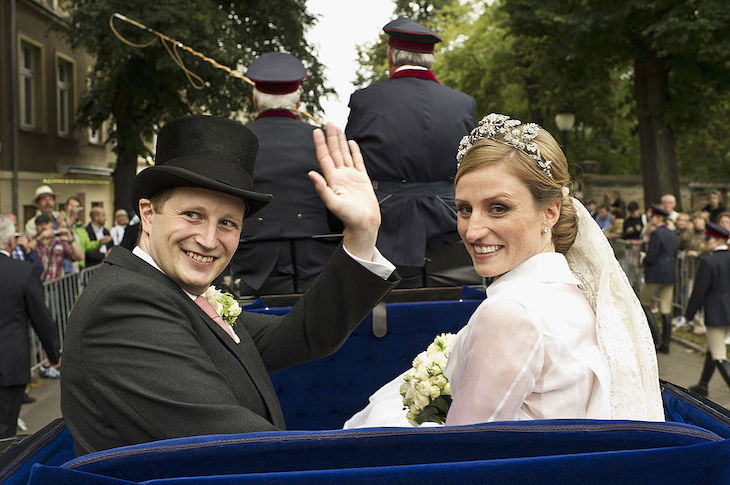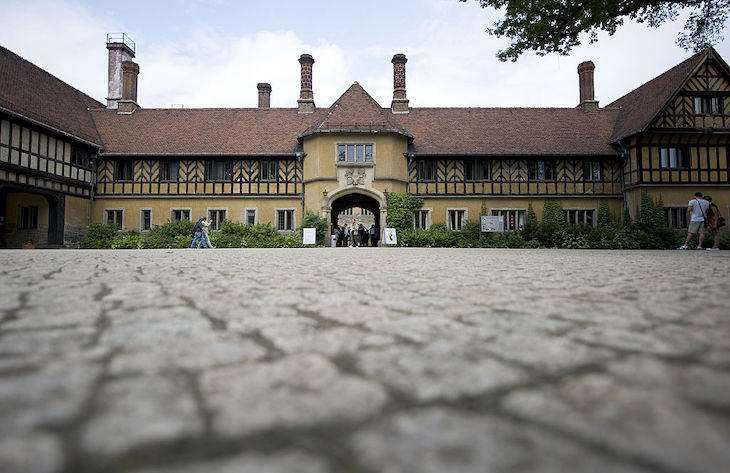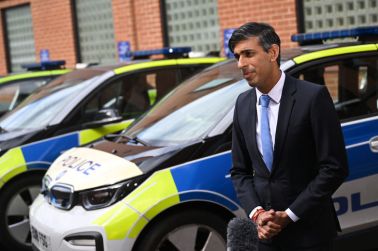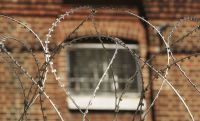Georg Friedrich Prince of Prussia has two big problems: he is the great-great-grandson and heir of Wilhelm II, Germany’s last emperor who was forced to abdicate after his country’s disastrous defeat in the First World War. For another, he is Prince of a country that hasn’t existed since 1947, when the victorious Allies abolished Prussia.
As if that wasn’t enough historical baggage, the head of the House of Hohenzollern has been embroiled in a long legal fight over his family’s role in Hitler’s rise. Now the Prince has announced a tactical withdrawal from this particular battle over his family’s legacy, one that he hopes will ‘clear the path for an open-minded debate.’ But it’s unlikely that a country so uneasy about its own past is ready to view that of its former monarchs with emotional detachment.
The argument concerns an estate worth several hundred million euros. The Hohenzollerns claim their land, property and over 10,000 pieces of art were seized from them illegally in the course of their tumultuous 20th century history. Among the disputed objects is the last palace ever built by the family: Cecilienhof, a mock-tudor manor house, completed in 1917 and famously host to the Potsdam Conference in 1945 where the Allies decided upon many aspects regarding the future of post-war Europe.
While the Hohenzollerns had abdicated and fled into exile in 1918, the German state returned Cecilienhof to them as private property in 1926. The Crown Prince Wilhelm and his wife Cecilie, after whom the place had been named, lived there until forced to flee from the advancing Red Army in 1945.

The Soviets seized Cecilienhof and much else from the Hohenzollerns without compensation before handing it over to the East German state. As a result, much of the property and artwork Georg Friedrich considers his, is now in public hands. A bitter legal battle has dragged a former royal family back into the limelight that many Germans would rather confine to the dust of history.
On the whole, the German state accepts that the Soviet confiscations of 1945 were unlawful and it’s possible for the heirs of those affected to claim restoration – or at least compensation – for nationalised property. But there is one condition: the ancestors in question must not have been ‘substantially involved in furthering the Nazi system.’
The Hohenzollerns’ reappearance in the public eye coincides with Germany’s renewed unease about its pre-WWI history
Therein lies the Prince of Prussia’s problem. His great-grandfather, the Crown Prince Wilhelm, had declared his support for the Nazis early in the (false) hope that they might be inclined to restore the monarchy once in power.
‘If I was to be made president,’ he fantasised in 1932, ‘and make Hitler chancellor; then I’d hold all the cards.’ In an interview with the German newspaper Die Welt earlier this week, Georg Friedrich still held on to the idea that ‘it cannot be proved that he gave the Nazis advantages’ but admitted that ‘it is clear that he sought proximity to the Nazi regime.’
Whether he is right or wrong, the heated public debate that came with the Prince’s legal challenge has put him in an awkward position. He has simultaneously tried to prove that Wilhelm did not aid Hitler’s rise while having to acknowledge the incontrovertible fact that he ‘ingratiated himself with rightwing extremism.’
On this blurred line between Wilhelm wanting to help Hitler into power and actually achieving this endeavour hinges the question of the confiscated Hohenzollern estate. It’s a nuance too fine for many German observers.
Part of Georg Friedrich’s problem is that his legal claims remind Germans of a number of national wounds that have not healed. The fate of the House of Hohenzollern was intricately linked to that of the German nation state. It was under its King of Prussia, Wilhelm I, that the country was first formed in 1871, making him Germany’s first emperor. And it was under his grandson Wilhelm II, that this empire fell in 1918. Finding it difficult to accept that Germany was now a republic, the Crown Prince Wilhelm didn’t even shy away from colluding with the Nazis in an effort to reclaim the throne. When two new German states swore ‘never again’ in 1949, they meant not only Nazism, war and genocide but also many things that were associated with the rise of these horrors, including Prussia and its royal house, the Hohenzollerns.
Georg Friedrich has tried his best to shake off visible remnants of his family’s past. With his dark trouser suits and measured language, he comes across as business-like and reasonable, projecting an image that is the polar opposite of the pompous antics of his ancestor Wilhelm II or the flirtations with extremism of the last Crown Prince.
This week, he announced that he would withdraw his claims for those parts of the disputed estate that fall under the Nazi clause. It’s a tactical withdrawal in the hope that the ongoing discussion of his great-grandfather’s doings in the 1930s won’t shape the legacy of his family. Georg Friedrich went as far as to condemn Wilhelm’s actions to the point where he cannot ‘be a source of tradition for our House.’
The move was widely met with relief from those trying to tackle the uncomfortable question of the Hohenzollern estate. Federal Government Commissioner for Culture Claudia Roth told the magazine Der Spiegel that ‘the gordian knot of the Hohenzollern complex has been severed.’
In a further effort to clear the Hohenzollern name, the Prince of Prussia also promised to be more open about the family’s past. A digitised archive about his great-grandfather Wilhelm will be accessible to the public. He hopes that this could ‘perhaps be the start of a bigger forum with the aim to place my family into the political history of the 20th century.’
But despite the palpable relief from politicians, the Hohenzollerns’ reappearance in the public eye coincides with Germany’s renewed unease about its pre-WWI history. Foreign minister Annalena Baerbock has recently renamed the central meeting room in her ministry to avoid being reminded of its founder Otto von Bismarck after whom it had been named. It is now called ‘Hall of German Unity’.
Culture Minister Roth is also keen to erode the Prussian legacy and has proposed to erase the word ‘Prussian’ from the Prussian Cultural Heritage Foundation, a government-funded body that oversees dozens of museums and sites in and around Berlin.
Others have waded in on Georg Friedrich’s attempt of offering an olive branch to the German state. Historian Stephan Malinowski called ‘this new avowal of transparency belated and therefore insincere.’
It’s unlikely that the Hohenzollerns will be able to swim against the tides of current political sentiment. Their public presence remains an uncomfortable reminder that Germany cannot escape its past with the brush of a pen stroke or by putting new signs and labels on its institutions.








Comments
Comments will appear under your real name unless you enter a display name in your account area. Further information can be found in our terms of use.